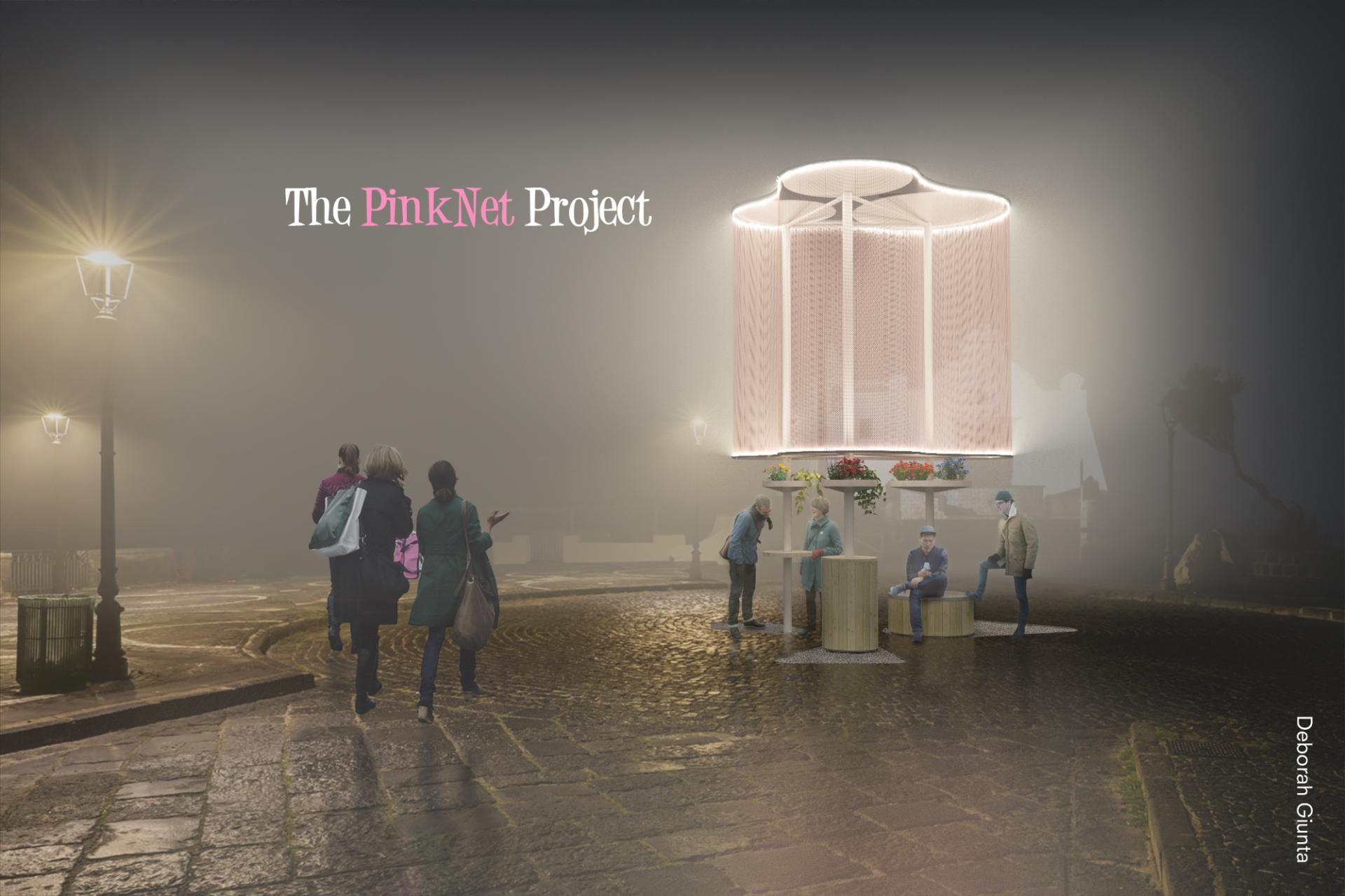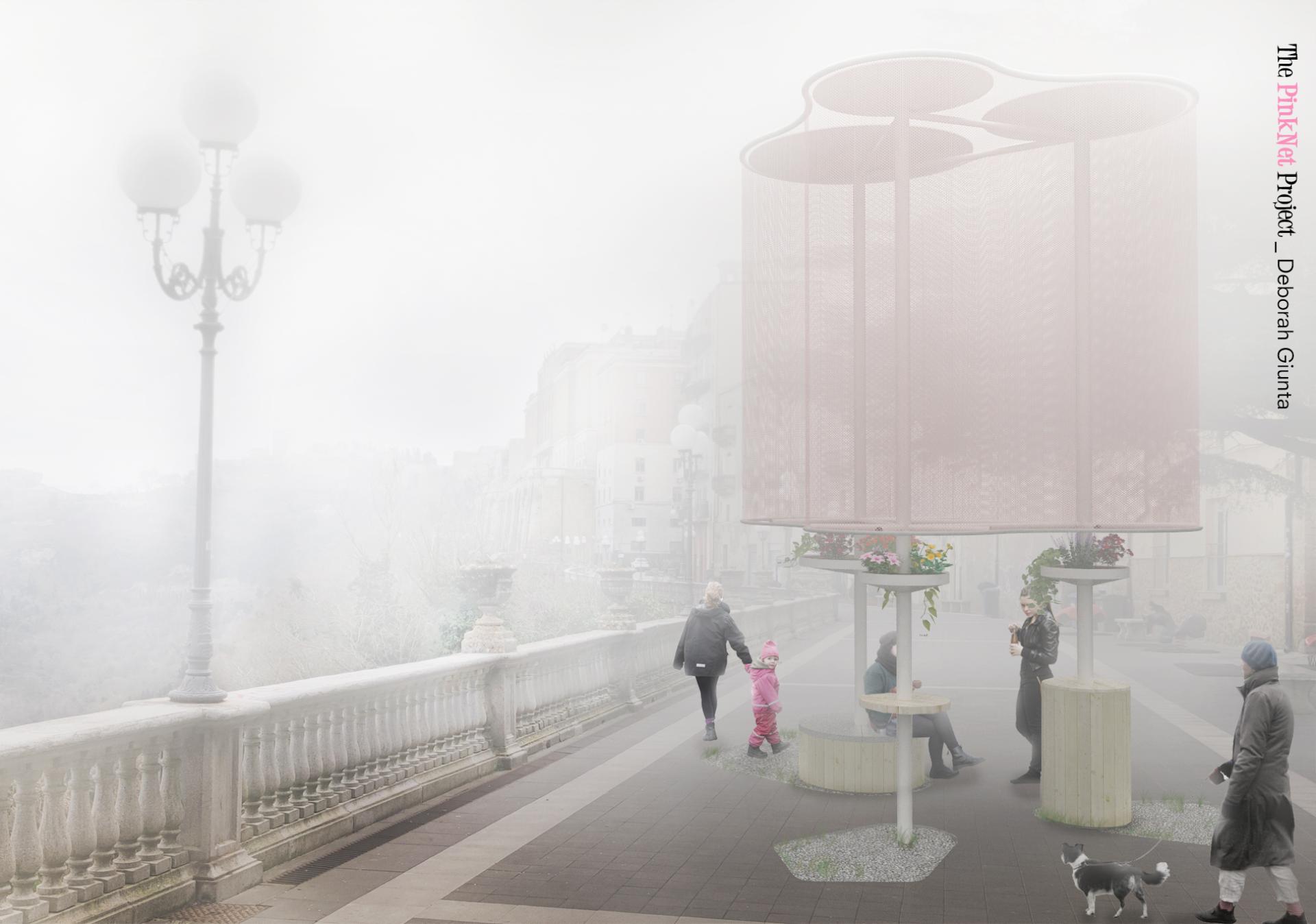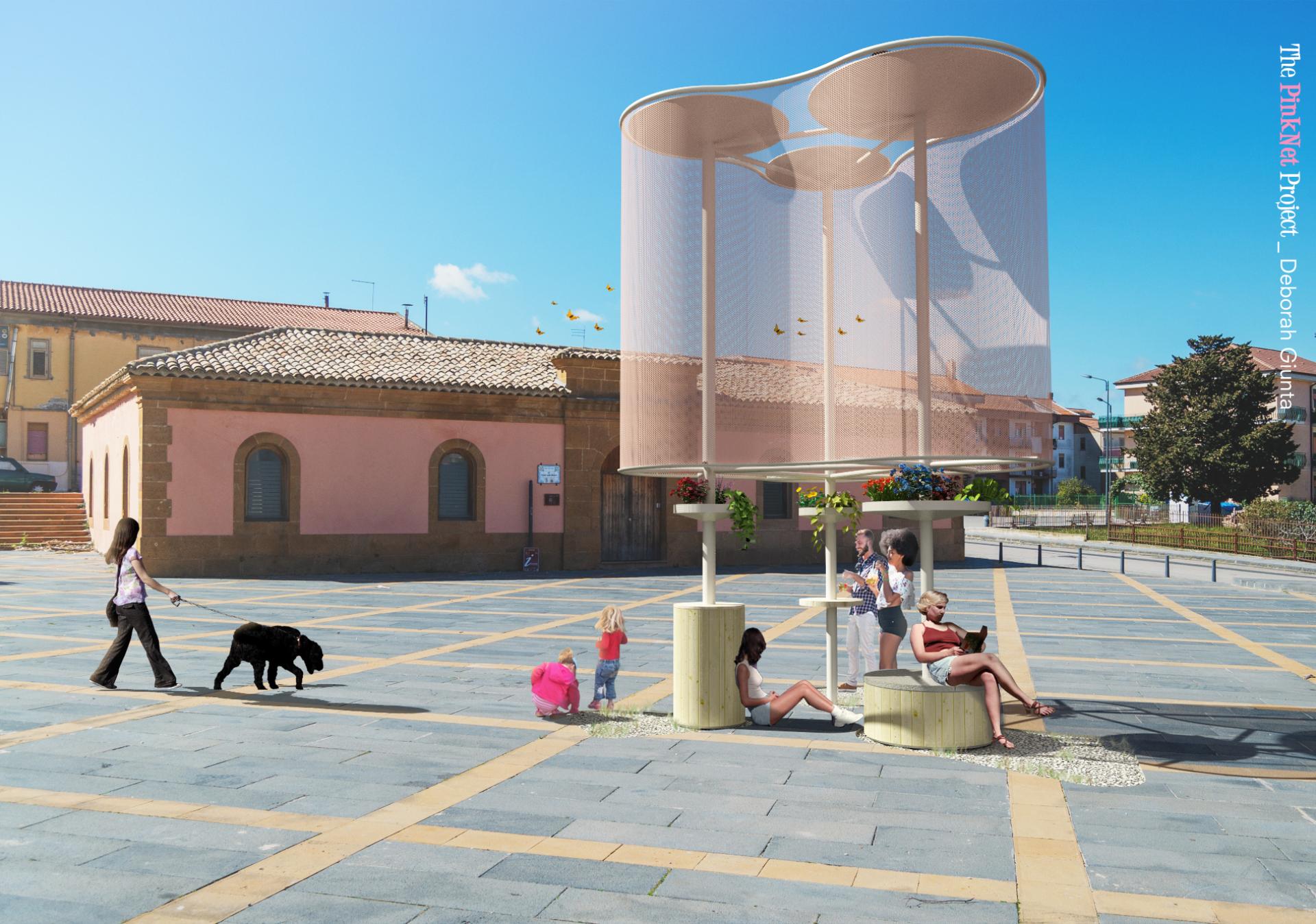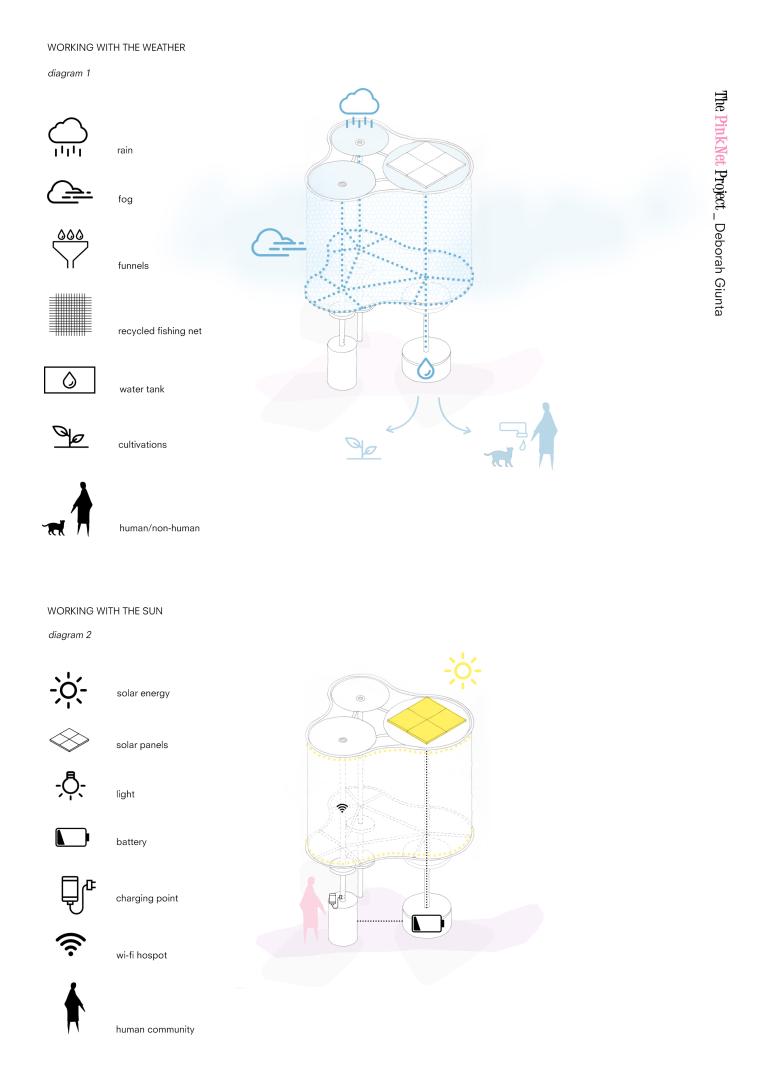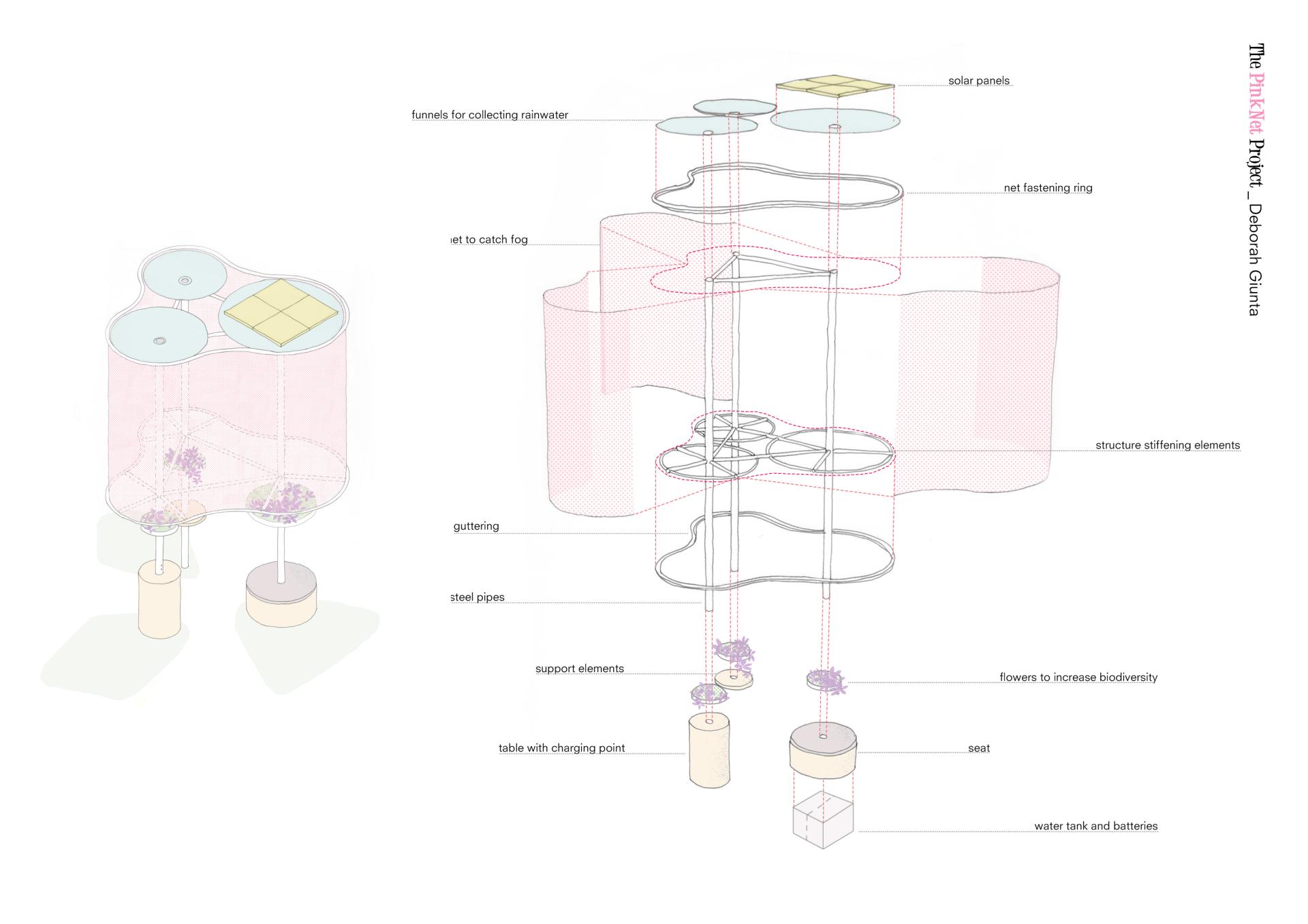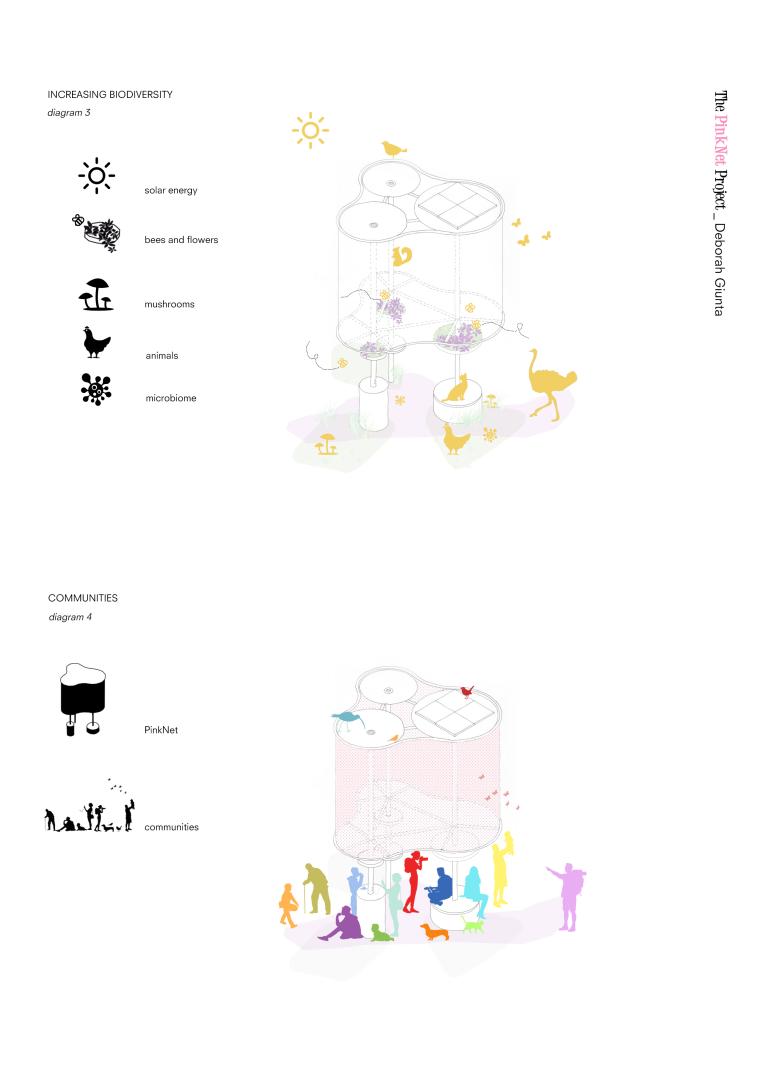The PinkNet Project
Basic information
Project Title
Full project title
Category
Project Description
Sometimes certain meteorological phenomena are seen as “enemies”. Fog is often perceived as a discomfort. However, what if we tried to see it as a resource and an opportunity? What if we could capture it and turn it into water that could be made available to human and non-human communities? Pink Net is an ecological device that wants to resonate with the environment: it captures water and the sun, recycles existing plastics, increases biodiversity, lights up cities and much more!
Geographical Scope
Project Region
Urban or rural issues
Physical or other transformations
EU Programme or fund
Which funds
Description of the project
Summary
The idea of PinkNet was born from the observation of everyday life: people are getting more and more separated from the atmospheric elements from which we protect ourselves with any kind of interface. Our body is almost never in direct contact with the surrounding environment because, ultimately, we believe that wind, rain, fog and even the sun are negative phenomena. This behaviour depends on a view of the world and nature as separate entities from us as human beings.
However, what if we change our point of view and, for example, we begin to see fog as a resource? What if we were able to capture it and make it our friend with whom we could build a positive and truly ecological relationship? In some countries of the world, such as Peru, Morocco or Israel, there are techniques and devices that allow fog to be captured and transformed into water. We know that experience and we want to go further.
Our project uses this low technology and proposes a more complex architectural device that does not stop at just capturing the moisture in the air but becomes a hybrid device that puts different actors in relation to each other: solar energy, water, humans, animals, light, wind and all of them with each other. The fog becomes an opportunity to build a hybrid “critter” in the environment that responds to environmental stimuli and returns effects and actions to the human and non-human communities that interact with it. Furthermore, PinkNet wants to be a small manifesto for an architecture in consonance with its environment; PinkNet has a political dimension because it wants to become a node in the built environment where controversies between different communities can take place; PinkNet can be the space where biodiversity meets wi-fi networks, animals find shelter, humans increase their ecological awareness, and so on…
Key objectives for sustainability
PinkNet was conceived in Sicily and, more precisely, in the inland areas of Sicily where the climate is often very humid. Moreover, fog is widespread in many of these areas. However, these areas also suffer from desertification and dryness. This was the spark that made us think about the possibility of exploiting the presence of this meteorological 'enemy' and making it available to communities in the form of water. However, constructing a simple net that would capture fog, or atmospheric humidity, seemed to us to be a missed opportunity, since this device would have to “inhabit” mainly urban environments. The annoying enemy becomes an important ally, and people who see PinkNet working will get a new ecological awareness.
The main feature of PinkNet is its net that captures fog and moisture in the air. We decided to recycle the thousands of unused fishing nets that often pollute our seas. Instead of increasing sea pollution, they will catch the water. The idea is to create a circularity between materials and functions that can become part of a sustainable economic, material and ecological system again.
However, we think that PinKnet could be much more: for this reason, in addition to the water collected by the funnels of the top and through the network, we think that this strange critter can collect solar energy and accommodate a system of plants and flowers. Solar energy can be used for a charging point and to power a free Wi-Fi hotspot; plants and flowers can attract insects and bees that can increase environmental biodiversity. Water can be made available to communities, especially if we think of creating a system consisting of several PinkNet. Each device, in fact, has a net of about 30 square metres and, calculating that a square metre in a foggy day can capture between 10 and 20 litres of water, a PinkNet critter can collect between 300 and 600 litres to be made accessible to human and non-human communities.
Key objectives for aesthetics and quality
PinkNet is made up of air, sun and water–it is not a classic architectural object with a heavy material mass. It is a light creature working with almost intangible entities. PinkNet fits into the environment to intercept energy flows, atmospheric fluids and to offer citizens the opportunity to interact with each other and with nature. It offers the possibility of meeting underneath it or in the web thanks to the presence of a Wi-Fi; it allows to rest while sitting, or to eat something inside it. In the dark, it illuminates its surroundings and can turn into a landmark during foggy nights.
PinkNet does this elegantly, with few components and with the commitment to improve the architectural conditions, for instance, of urban suburbs. The beauty of PinkNet is the beauty of everyday things and actions that allow people to relate to their environment.
The aesthetic concept of this device/creature aims to combine the lightness of a net with the invisibility of environmental flows and human actions and experiences.
Pink Net could become the icon of an ecological and innovative way of conceiving living on the earth. PinkNet does not close, but welcomes; PinkNet does not solve a problem, but helps to improve relationships; PinkNet does not define identities but allows diversity to meet; PinkNet does not take resources away from the environment but transforms them to make energy available to all. Perhaps this is its true beauty.
Key objectives for inclusion
We define PinkNet in different ways: hybrid device, because it is made up of different elements; or “critter” (in a positive way) because it is a kind of creature composed of non-human organic parts and technological elements. In any case, it is a performative object that produces actions and experiences in its environment. As we have already explained, it works with water, wind and light, but also with plant communities, and non-human animal communities. Citizens will find in it one or more possibilities to build ecological communities. They will be able to use the water for irrigation purposes, or they will be able to meet in it, or they can easily charge a smartphone, or they can have a useful Internet access point.
PinkNet is designed so that its affordability is simple and intuitive: it does not put obstacles in the way, it lets people approach it so that they can interact with it. We believe that the people who interact with it can also modify it, negotiating with it, and with the other actors in the system, new uses and new assemblages of people and things. PinkNet has a political dimension as it can be a node where material, economic and social controversies are highlighted. The design of public spaces and community resources plays an important role in the quality of life of citizens. PinkNet can contribute to building public spaces because it can bring people together and create exciting opportunities for engagement.
Physical or other transformations
Innovative character
As a performative object, PinkNet combines different experiences, and its elements allow different actions to happen. It is already set up so that different lines and flows can be combined through it, because its nature is deeply ecological.
Sustainability, beauty and community engagement are not separate entities: on the contrary, they are always connected in a wonderful entanglement of different and often conflicting elements.
PinkNet first and foremost performs functions related to the Earth - to its telluric dimension - and to atmospheric and meteorological dynamics. These functions enable people to achieve ecological awareness, which is increasingly urgent today. Understanding where water comes from and how to use it, understanding the power of the sun and transforming it into energy and digital information, understanding the meaning of biodiversity–these are the goals that PinkNet aims to achieve, contributing to an environment where it is pleasant to live and meet. We think that the role of our device can be described according to four main ideas/actions; in turn, they are made up of other elements whose combination generates performances and thus generates relational processes.
For this reason, we have chosen to represent the actions and relationships that can be developed through simple diagrams showing the actors involved.
- The first diagram explains which actors are involved in water collection.
- The second one shows the contribution of the sun.
- The third diagram talks about the enhancement of biodiversity that can generate PinkNet.
- The last one illustrates the communities that can come together thanks to our device.

